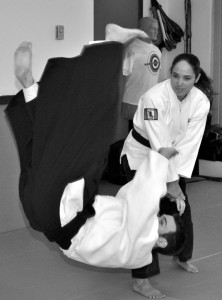7 Useful iPhone Apps for Mental & Physical Health
I have had an iPhone 4 for over a year now and up until recently had hardly any apps on it. After hearing about how useful they can be, I decided to explore what ones might be helpful for maintaining mental and physical health. Of course, I preferred if they were free, but I found myself intrigued by a few of the ones that required payment. So in this post I’ll review 7 of the ones that I thought people who strive for a healthy lifestyle would find most useful.
1. Clear (Productivity App)
Price: $2.99. This remarkably simple app makes it easy to make and track lists, whether it’s to-do lists, grocery lists, goal lists, etc. It makes cute little sounds as you add and subtract things from your lists, making it that much more satisfying a process. According to studies, making lists helps us organize our minds, which can in turn help us learn better (or so I was told in my 1st year university psychology class). Clear is really intuitive and easy to use, though you may find that the very act of making these lists makes it so that you don’t actually have to rely on them as much (as is the case with me).
Nutty Buddy Groin Protector Product Review
In the fall of 2011, I was given the opportunity to conduct a review of a different type of groin protector. I’ve tried a lot of different cups over the years, trying to find one that works effectively and is also comfortable.

The Nutty Buddy
When I started in Jiu-jitsu, my style didn’t use groin protection, and people were left to defend themselves, and exercise control while demonstrating strikes to the groin. I’m not going to debate the pros and cons of cup vs non-cup training, except to say, anyone who thinks wearing a groin protector makes you less likely to protect the groin has likely never worn a cup, or at the very least, been hit by Lori O’Connell Sensei while wearing one.
If you watch the video of me being struck in the groin at the end of this review, you’ll see how hard it is to intentionally let someone hit you in the groin during the included outtakes. (more…)
How to Add More Realism to Self-Defense Training – Resistive Attackers
In Can-ryu Jiu-jitsu, we train how to defend against a wide range of specific attack scenarios including wrist grabs, head locks, throat grabs, bear hugs, wild haymakers, ground holds, weapon attacks and more. When students are just starting out, the attacks are more or less static and non-adaptive with training partners being fairly compliant. We start off with very low levels of resistance to give students the chance to work on form and technique without being under so much pressure that they fall apart. Below is an example of a self-defense situation response performed in a demonstrative, low-resistance format from Steve Hiscoe Shihan’s YouTube channel (he’s one of the heads of our style).
Teach People, Not Just Lesson Plans
 Teaching is an important vocation, not simply to pass on knowledge, but to inspire people to greatness. Teachers have the capacity to change lives, and it’s not just because they put together a good lesson plan. The best teachers are the ones that see those they teach not simply as students, but as people.
Teaching is an important vocation, not simply to pass on knowledge, but to inspire people to greatness. Teachers have the capacity to change lives, and it’s not just because they put together a good lesson plan. The best teachers are the ones that see those they teach not simply as students, but as people.
Each person has their own unique learning style, personality, and life situation. They each have different interests and passions that inspire them, as well as different hot buttons or issues that cause them to think stressful thoughts. If teachers take a genuine interest in their students not simply in terms of their training but in the context of their whole lives, they can not only help better in the class setting through greater understanding, they can also touch their lives in a more meaningful way.
I covered some of this concept in my blog post How Martial Arts Instructors Can Give More, but I feel like there is more that can be said on this topic. Here are 3 ways teachers can focus more on their students as people: (more…)
New Specialty Classes at Pacific Wave Jiu-jitsu
 To mix things up a bit, we’ve decided to add new specialized skills classes to our schedule. These classes will give students the opportunity to add some variety to their training, while learning specific topics in more detail. Originally we were thinking about making one of them a sparring skills class and the other ground grappling skills, but we’ve decided instead to leave the choice up to the students. We’re letting the students vote by telling us their order of preference for the following topics: sparring skills, ground grappling skills, joint manipulation or throws/takedowns. Whichever two are chosen, we’ll be teaching on Mondays and Wednesdays, 6:15-7:15 for 2 months after which we’ll change the topics.
To mix things up a bit, we’ve decided to add new specialized skills classes to our schedule. These classes will give students the opportunity to add some variety to their training, while learning specific topics in more detail. Originally we were thinking about making one of them a sparring skills class and the other ground grappling skills, but we’ve decided instead to leave the choice up to the students. We’re letting the students vote by telling us their order of preference for the following topics: sparring skills, ground grappling skills, joint manipulation or throws/takedowns. Whichever two are chosen, we’ll be teaching on Mondays and Wednesdays, 6:15-7:15 for 2 months after which we’ll change the topics.
These classes are as much for us, the instructors, as it is for our students. It helps us to go into specific topics in more depth than we get to do in our day-to-day classes, helping us explore our martial art more deeply while also letting us practice skill-specific teaching. It’s also fun for us to teach from a slightly different angle than our usual classes. We’re both really looking forward to teaching these classes. (more…)
The Benefits of Training with People Bigger/Stronger than You in the Martial Arts
 My last blog post addressed the benefits of training in the martial arts with people who are your own size or smaller, today I’d like to explore the counter point, the benefits of training with bigger, stronger people. Personally, I think the benefits are much more obvious in this scenario, but worth discussing as sometimes people will stick to working with people their own size because it’s easier and more comfortable, or because they are focused on a competitive arena in which they’ll only be fighting in their own weight class. The fact of the matter is, if you only ever train with people your own size, you aren’t stretching your abilities, and are missing out on the opportunity to train for more realistic self-defense scenarios.
My last blog post addressed the benefits of training in the martial arts with people who are your own size or smaller, today I’d like to explore the counter point, the benefits of training with bigger, stronger people. Personally, I think the benefits are much more obvious in this scenario, but worth discussing as sometimes people will stick to working with people their own size because it’s easier and more comfortable, or because they are focused on a competitive arena in which they’ll only be fighting in their own weight class. The fact of the matter is, if you only ever train with people your own size, you aren’t stretching your abilities, and are missing out on the opportunity to train for more realistic self-defense scenarios.
Here are a few benefits of training with bigger, stronger partners in the martial arts: (more…)
The Benefits of Training with People Your Own Size (or Smaller) in the Martial Arts
 Last night I stayed late after class working with two women on their ground grappling skills. After a little submission technique review, we took turns grappling with each other. One of my students thanked me after class, saying that she found it really educational to grapple with me because it helps her to learn because I move in a way that makes sense to her. This is an important thing to remember when it comes to martial arts training and teaching.
Last night I stayed late after class working with two women on their ground grappling skills. After a little submission technique review, we took turns grappling with each other. One of my students thanked me after class, saying that she found it really educational to grapple with me because it helps her to learn because I move in a way that makes sense to her. This is an important thing to remember when it comes to martial arts training and teaching.
Being a self-defense oriented instructor, we often emphasize the merits of training with people who are bigger than us. After all, we are much more likely to be attacked by someone bigger than ourselves on the streets, especially if you’re a woman. That being said, there are a number of benefits to training with people that are the same size as us too. Here are a few I came up with: (more…)
Japanese Tea Ceremony & Its Relevance to the Martial Arts
Sado, Japanese tea ceremony, is an art that has long been associated with the martial arts. Back in feudal Japan, it was initially indulged in primarily by the nobility. It was intended to be an activity free of social and political trappings, as guests were required to enter the tea room by a 2.5 square foot crawl door, a deliberately humbling device symbolically creating a sense of equality to everyone inside. The tea room was one of the few places in which a samurai was not allowed to carry their swords, leaving them outside as they enter.
Embracing Failure: The Value of Struggle When Learning Martial Arts
 A recent Time article called Why Floundering is Good I read suggests that trying to figure out something on your own produces better results than having guidance from the beginning. The article is written in the context of intellectual learning, but I do think there are some takeaways for people learning or teaching martial arts or other physical skills, even if some adjustments need to be made for practicality and safety.
A recent Time article called Why Floundering is Good I read suggests that trying to figure out something on your own produces better results than having guidance from the beginning. The article is written in the context of intellectual learning, but I do think there are some takeaways for people learning or teaching martial arts or other physical skills, even if some adjustments need to be made for practicality and safety.
Obviously you don’t want to let students practise martial arts techniques in a way that is unsafe to themselves or their partners. They may learn from the injury, but at the cost of their well-being and the ability to train, which is not a worthwhile trade-off. Once certain foundations are laid, however, and students are able to do the techniques safely, it’s a good idea to give them “puzzles” to work out once in a while so they better understand the when to use what they’ve learned effectively. (more…)
Focus Your Mind/Go with the Flow: Martial Arts Training Tips
 I just finished reading a great book, Slowing Down To The Speed Of Life
I just finished reading a great book, Slowing Down To The Speed Of Life. I found it had really useful tips for helping to establish a more peaceful, simpler, happier life. It also gave me some great insights that apply for martial arts training, which I’d like to share. The main premise behind the book is that we spend all our time in one of two mental modes, the analytical/processing mode or the free-flowing mode. Both modes have their purposes, and this is apparent when you consider their usage in martial arts training and application.
Analytical/Processing Mode
This mode is most useful for learning new skills and concepts. It allows you to deliberately think through each step and consciously learn a physical technique. When you first learn a joint lock, throw, or other martial arts technique, the instructor breaks it down into steps to make it easier to follow along, and offers corrections along the way for you to process and analyze, so you better understand the fundamentals of the technique. As you practice in this mode, you’ll often find that the technique feels slow and chunky, especially ones requiring fine motor skills. This could also be thought of as the conscious mind. (more…)



 We're proud to announce that Lori O'Connell Sensei's new book, When the Fight Goes to the Ground: Jiu-jitsu Strategies & Tactics for Self-Defense, published through international martial arts publisher Tuttle Publishing, is now available in major book stores and online. More about it & where to buy it.
We're proud to announce that Lori O'Connell Sensei's new book, When the Fight Goes to the Ground: Jiu-jitsu Strategies & Tactics for Self-Defense, published through international martial arts publisher Tuttle Publishing, is now available in major book stores and online. More about it & where to buy it.